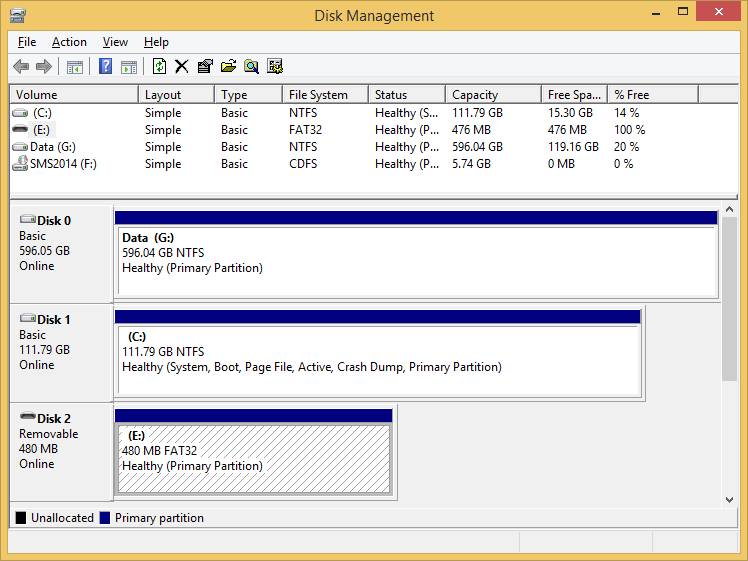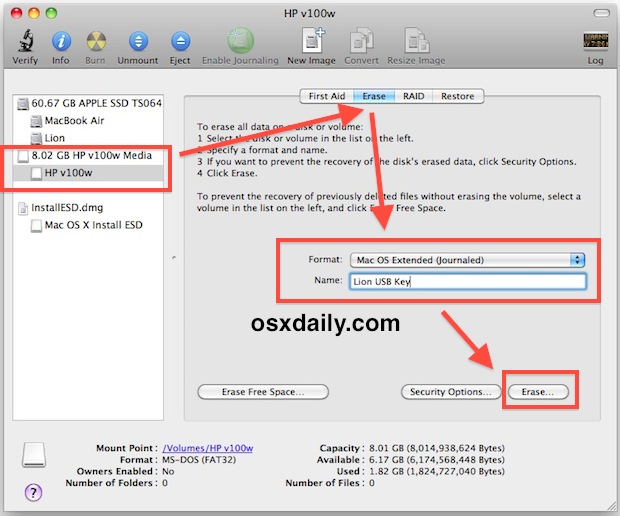Insert the flash drive or hard drive you want to format for Windows compatibility. Go to the Applications folder on your Mac’s hard drive, then go to the Utilities folder, and launch Disk Utility. Select the drive you want to format. Warning: the following steps will delete any info you currently have on the drive. Click the Erase button. Right-click on the USB drive in the disk-map and click format volume; Confirm the operation and Commit it in the main interface; Bootable USB hard drive format utility Create Bootable USB for Partition Expert 'I need a utility that is bootable that will allow me to format a hard drive. When I use the tool in the windows boot disk it doesn't help. Another is creating a drive for testing your Mac’s hardware. No matter the reason, having an additional bootable option on an external hard drive is definitely a good tool for any Mac user to have. How to Make a Bootable External Mac Hard Drive. Here are the steps to create a bootable external volume to start up to on your Mac.
- Format Flash Drive For Bootable Mac Os
- Format Flash Drive For Bootable Mac Iso
- Best Format For Usb Flash Drive
- Format Flash Drive For Bootable Mac Usb
- Mac Os Format Usb Drive
WARNING: Formatting will erase all data on the device. Back up all your data before proceeding.
Instructions below are for 10.11.x (El Capitan) and 10.12.x (Sierra)
1. Double-click on Macintosh HD - or in the Finder menu clickFile > New Finder Window
2. Click the Applications folder - if using a Finder Window Applicationswill be in the left side menu.
3. Click the Utilities folder.
4. Double-click Disk Utility.
5. On the left side of the window are the drives connected to the computer. Select the capacity of the drive respective to the one containing the device you wish to format then click the Erase tab.
Example: If the drive is called 'NO NAME', directly above that, you should see the drive capacity of 'XXXX'. Select this capacity.
6. Verify Volume Format is set to MS-DOS file system or exFAT, Scheme is set to “Master Boot Record” (Do NOT select GUID Partition Map) then click Erase.
Instructions below are for 10.13.x (High Sierra)
1. Open Disk Utility. Please See Answer 20985: How to access Disk Utility macOS
2. In the top menu bar, go to View, and choose Show All Devices
3. Select the upper level of the drive you would like to format and click the Erase button

4. Choose how you would like to format the drive
- Enter a Name for your drive
- Choose exFAT or MS-DOS (FAT) for the format
- Choose Master Boot Record for the Scheme
- Click Erase
5. When finished, the drive will be formatted and repartitioned successfully. Click the Done button

NOTE: exFAT is used on SDXC card (64GB and higher).
NOTE: exFAT can be used on flash drives or memory cards to transfer files larger than 4GB.
NOTE: MacOS 10.6.2 or higher is required for exFAT file system. Some older operating systems must have a patch installed before they can use the exFAT file system.
NOTE: If the above steps do NOT resolve the problem or if the lock switch is missing or broken, please back up your data and request a replacement using our online web form.

Related Articles:
Operating systems that support exFAT
Deleting files on a memory card using a Mac
Deleting files on a Cruzer USB flash drive using a Mac

Here is a guide on how to create a bootable external Mac hard drive to run macOS from an external hard drive.
There are quite a few reasons for why you may want to be able to have an additional startup drive for your Mac. One of the main reasons is backup of your current system. Another is creating a drive for testing your Mac’s hardware. No matter the reason, having an additional bootable option on an external hard drive is definitely a good tool for any Mac user to have.
How to Make a Bootable External Mac Hard Drive
Here are the steps to create a bootable external volume to start up to on your Mac.
Format Flash Drive For Bootable Mac Os
How to Create a Second Boot Volume
In order to create another boot volume for your Mac, you will need a form of external storage such as a hard drive. The faster the drive the better and a connection speed like Thunderbolt is preferred. You are going to be utilizing this hard drive, Disk Utility and MaOS installer from the App Store.
If you are running the newest version of Sierra, you will be able to use the Recovery Boot option to launch your installation of MacOS to install it on your external drive. In order to boot to Recovery, restart holding Command and R. You will then choose Reinstall a new copy of MacOS to begin the next step.
If your secondary hard drive was just purchased, you may need to open Disk Utility prior to starting your installation. You will want to ensure that your hard drive is in the proper partition scheme and is available to install to. Many drives purchased from third party retailers may come unformatted or formatted to Windows based schemes like NTFS and FAT32. In Disk Utility you will want to make sure it is set to Mac OS Extended (Journaled).
Format Flash Drive For Bootable Mac Iso
Upon starting the Install feature of Recovery, you will be presented with the option of choosing which Disk the installer is going to do its work on. You should see your current Macintosh HD and also your external hard drive. Choosing this as your install target should begin the installation process and install MacOS Sierra on your external hard drive. When the machine reboots, it will be booting to your external hard drive where you can set up an account and get to your desktop.
How to Use Your Bootable Mac Disk
Best Format For Usb Flash Drive
Now that you have created a second bootable drive, you are able to plug it in and reboot to it at any point in time. When you wish to do this, plug in the drive and reboot your Mac holding the Option key. Much like you did when installing, you will see your Macintosh HD and your now bootable External Drive show up as options. Clicking the External will start your Mac up on this new volume.
If you have completed the setup process and have an account enabled, the Mac will perform almost identically to how it would using the built-in drive. You are able to install applications on this drive and store media and information as backup or just additional copies. Many users will actually utilize a second hard drive option strictly for work related activities and then use the built-in drive for personal use.
This method is a safe way to keep a second bootable machine safely on a hard drive in the event of your internal hard drive crashing. You will also be able to test if it is indeed an issue with your hard drive by attempting to boot to your second drive and see if you can reproduce your issue.
Having a secondary boot volume has always been a personal recommendation as it comes in handy when you need a secondary place to separate data or use as a recovery tool in the event of mishaps.
Format Flash Drive For Bootable Mac Usb
Related Posts
Mac Os Format Usb Drive
Here is a guide on how to detect Mac malware and safely remove it from…
Like on a PC, most of your Mac's software lives in the same place on…
Here is a guide on how to remote access a Mac from another computer to get…
